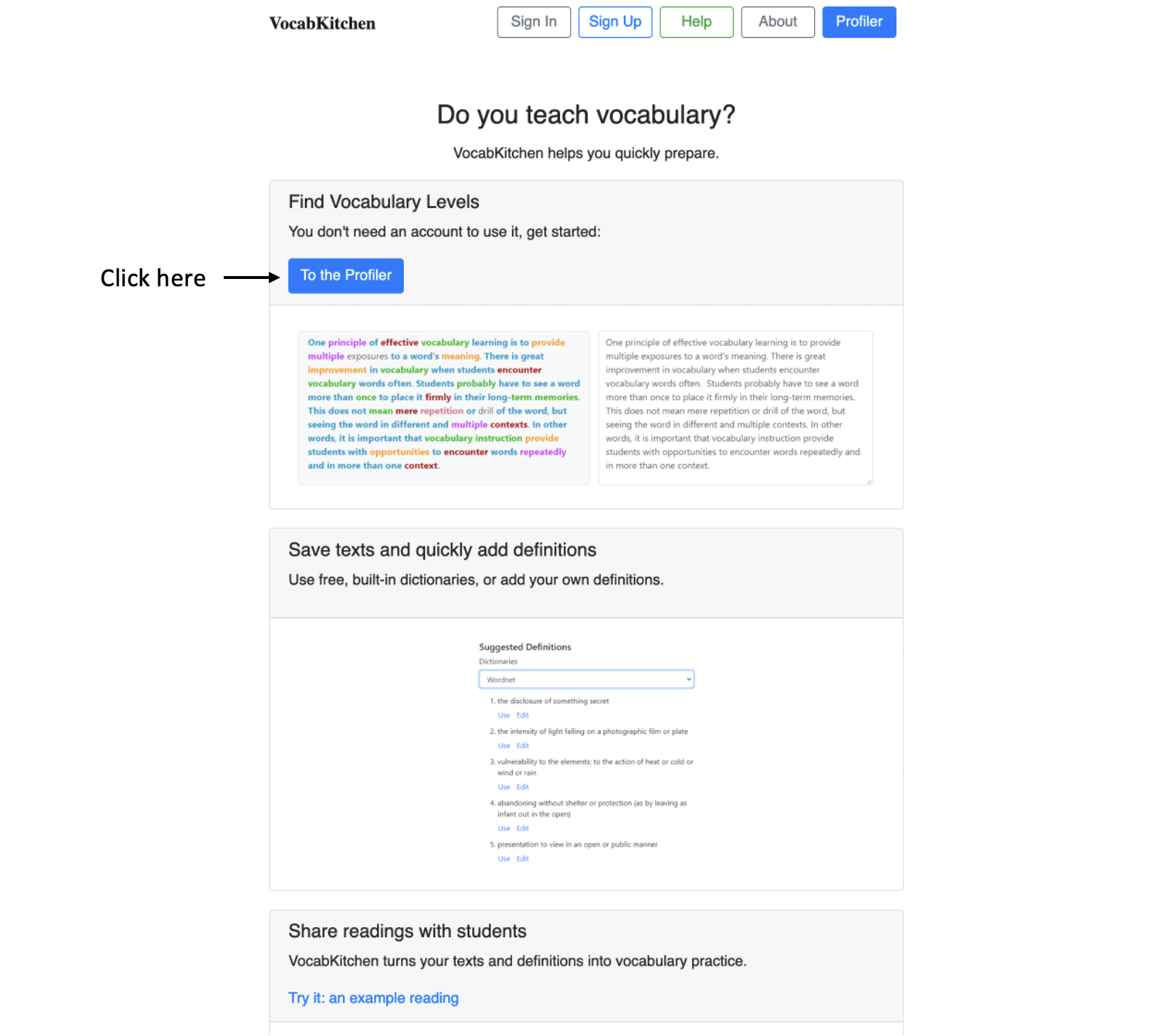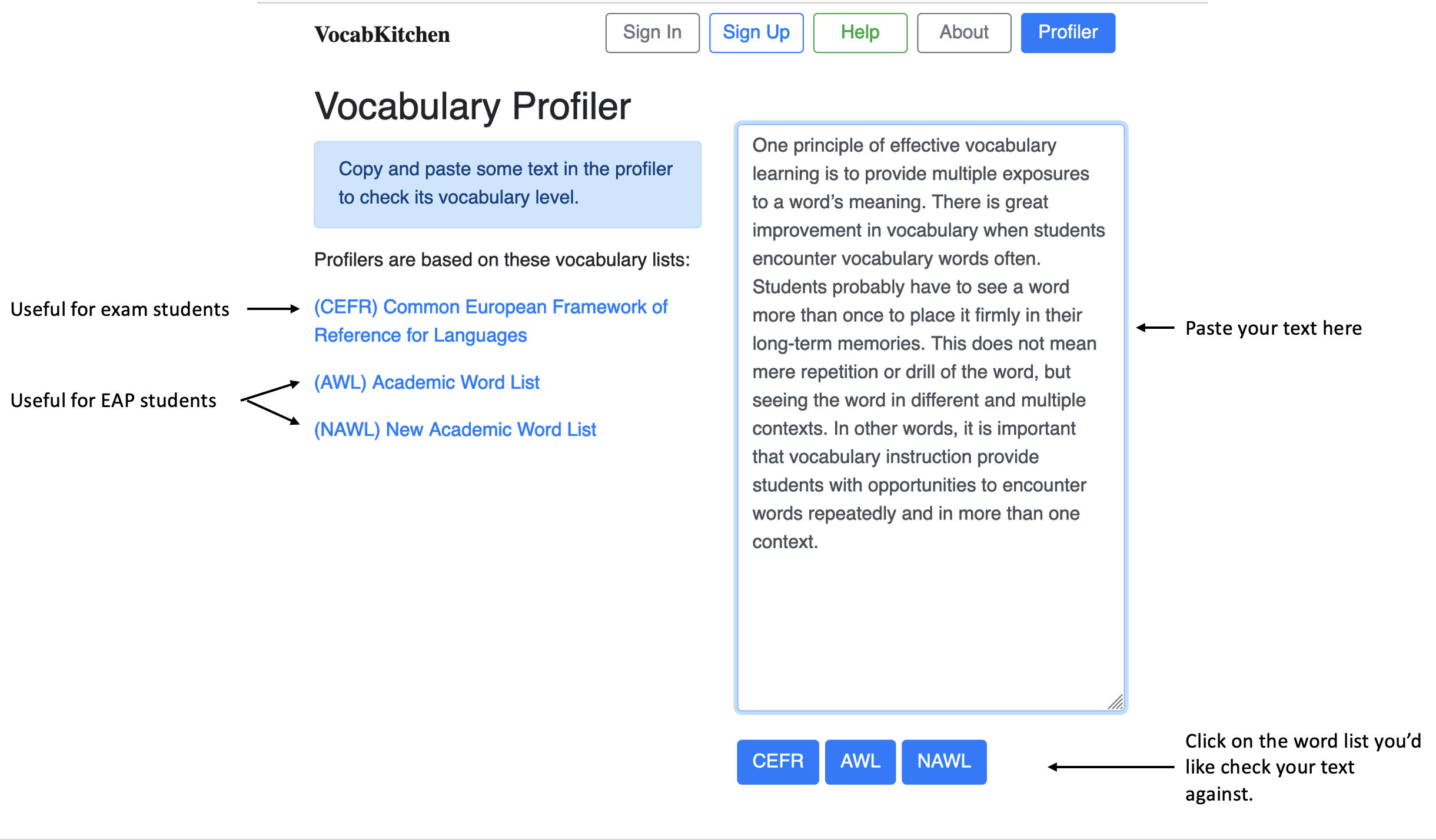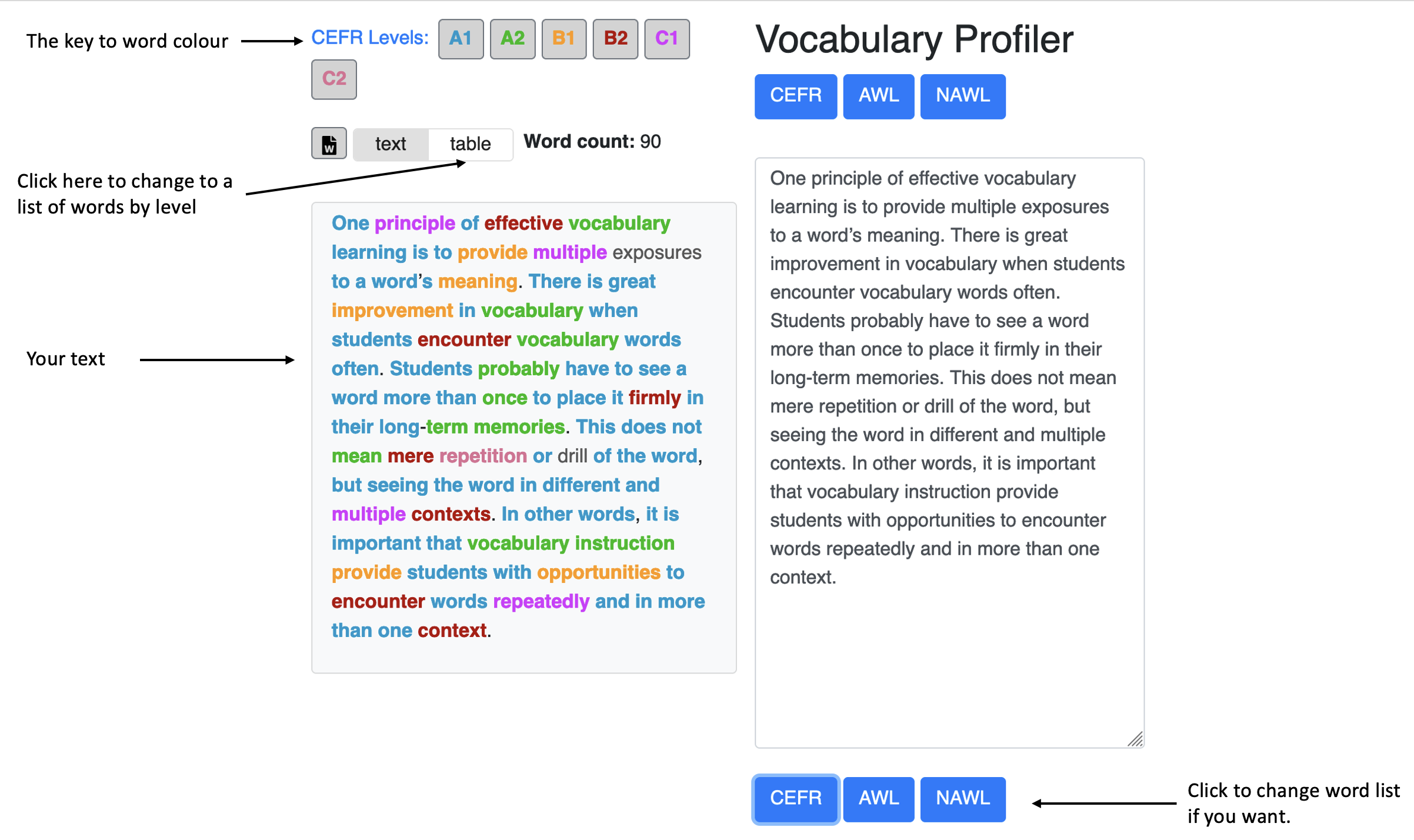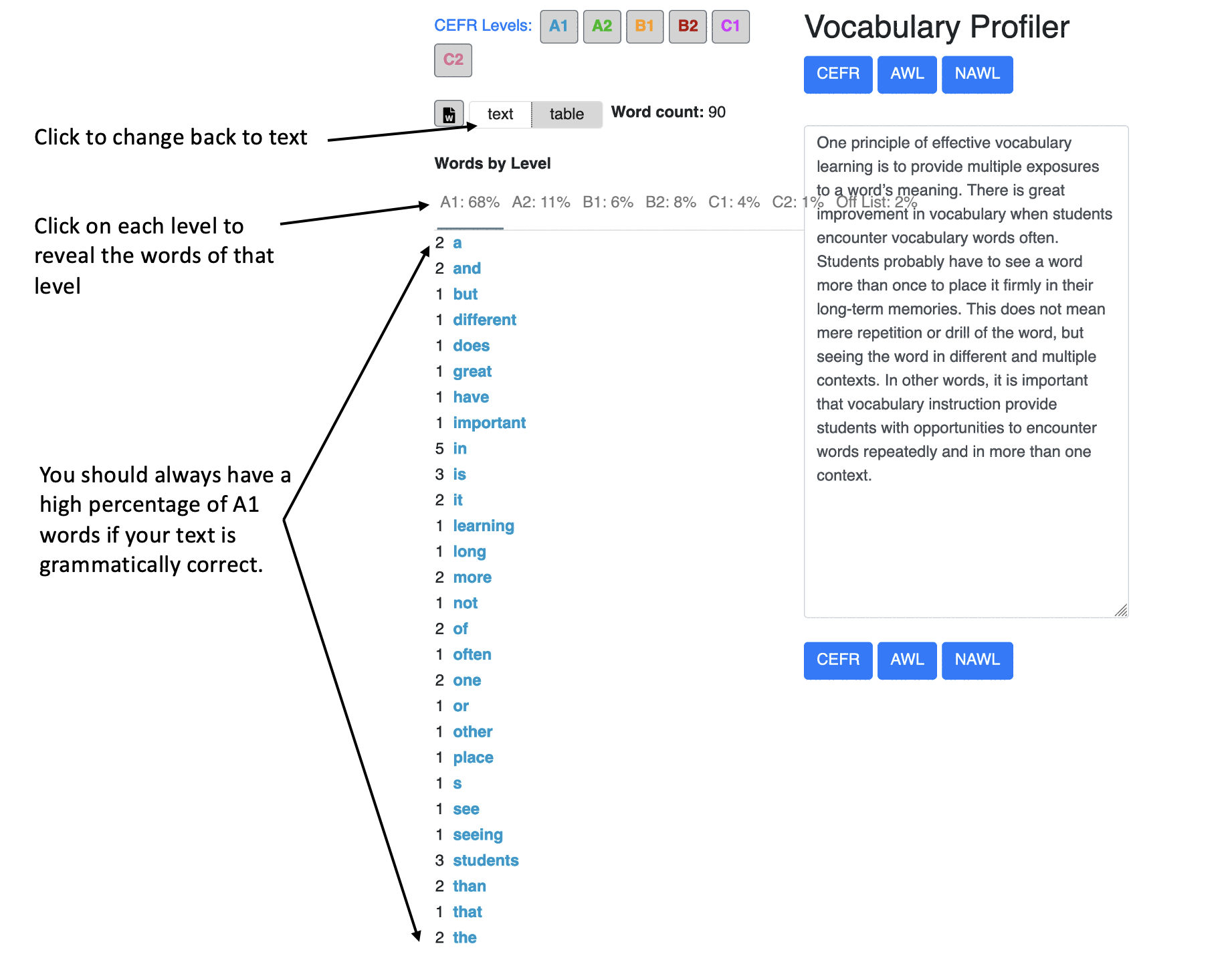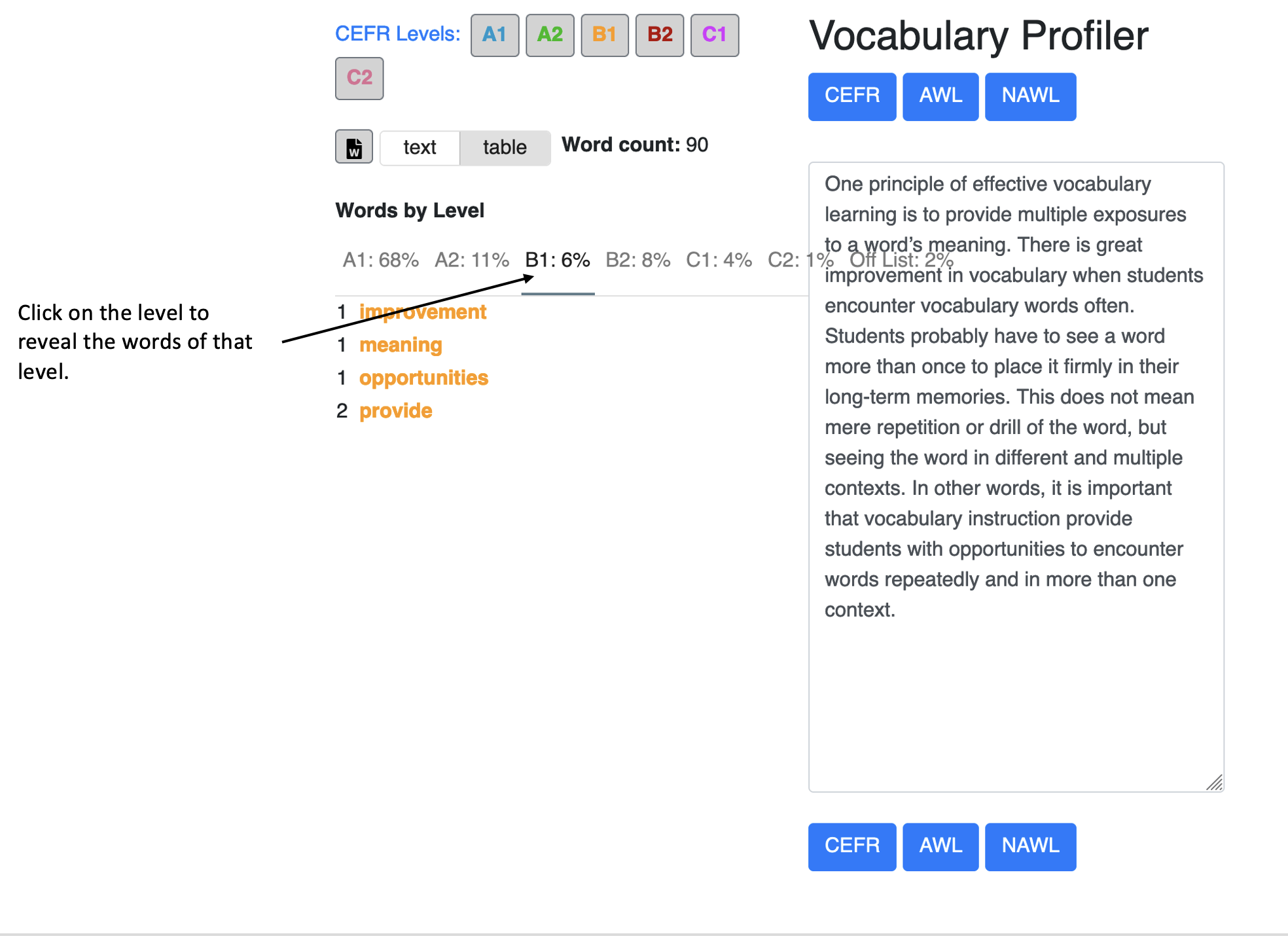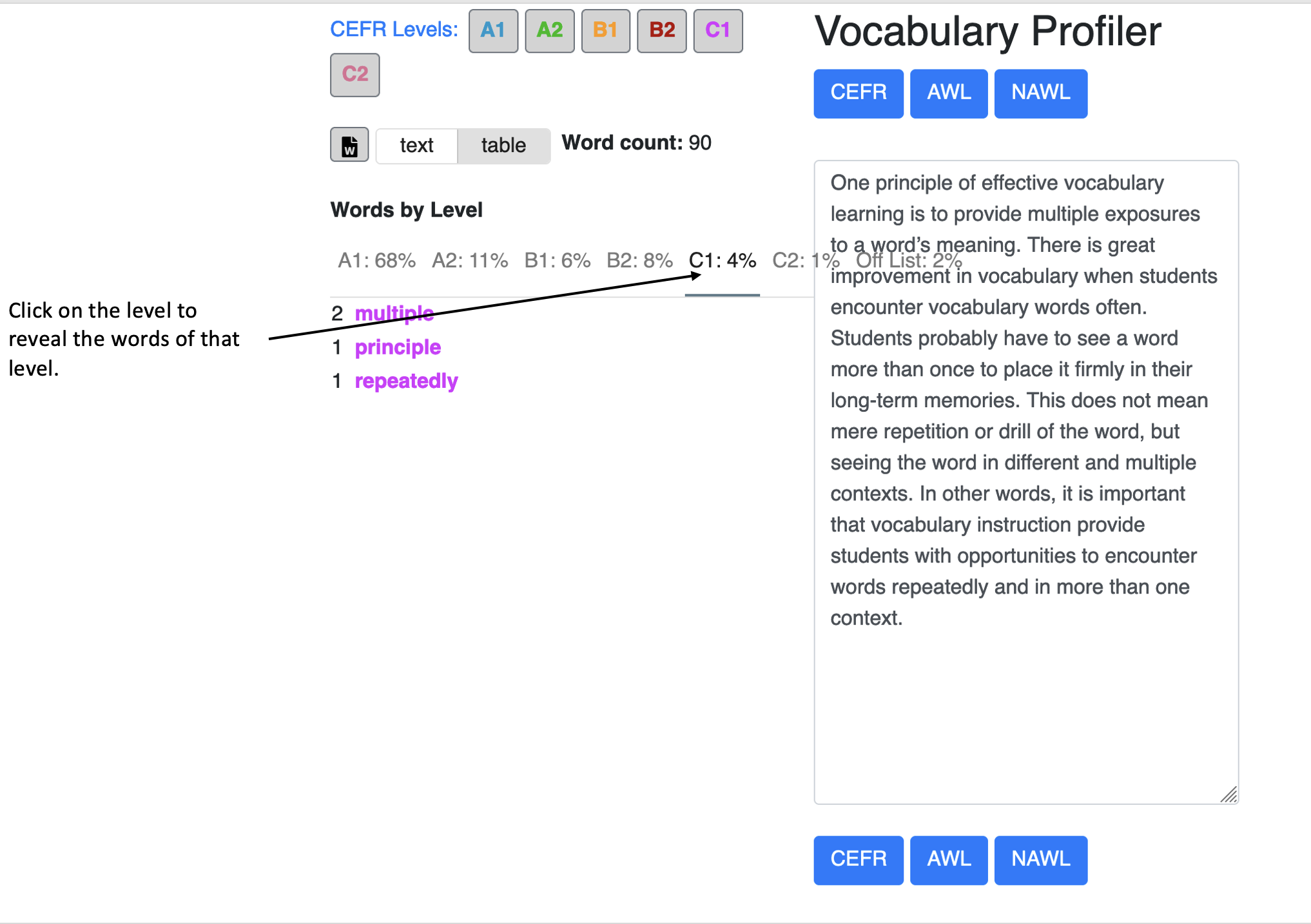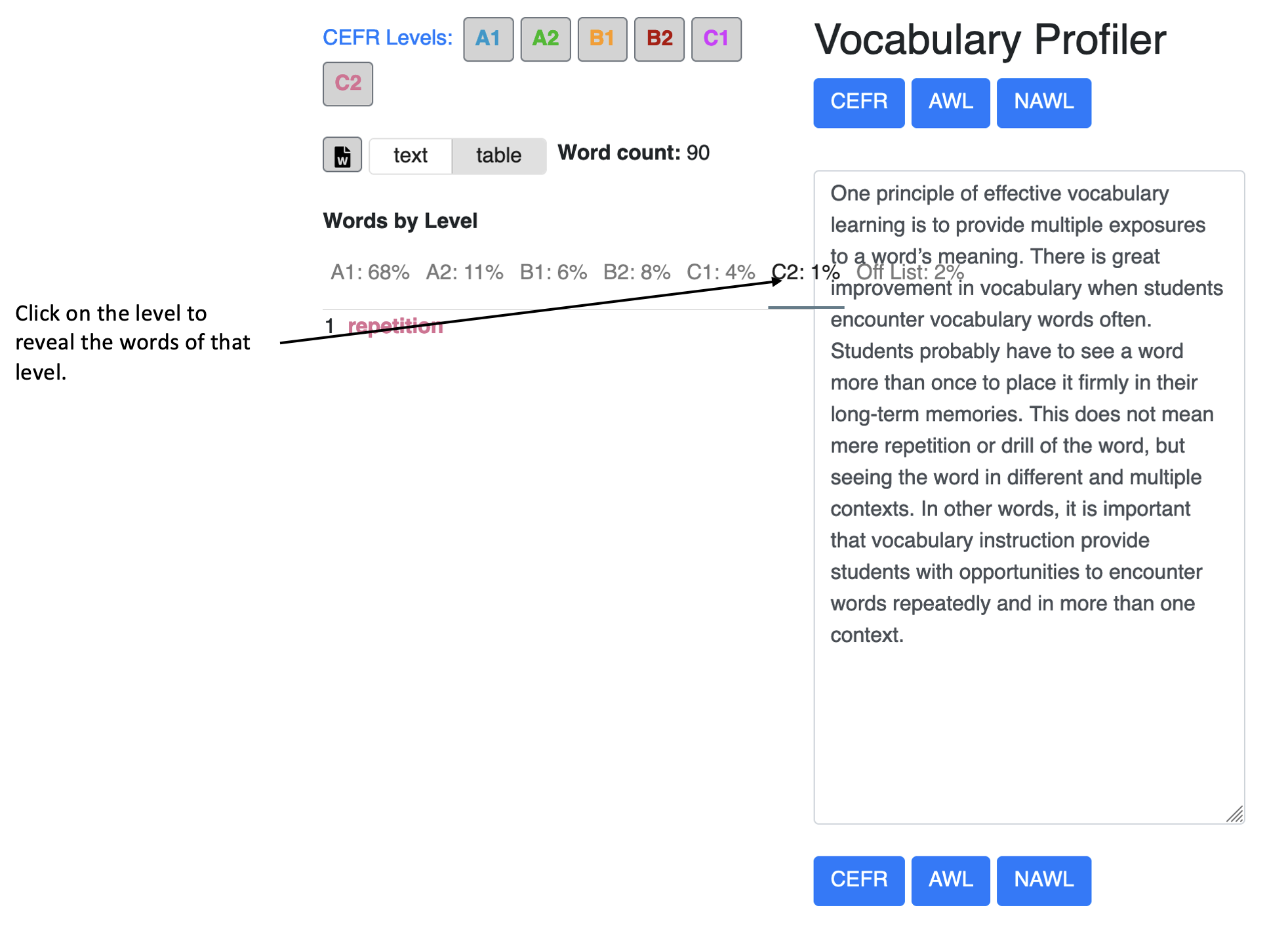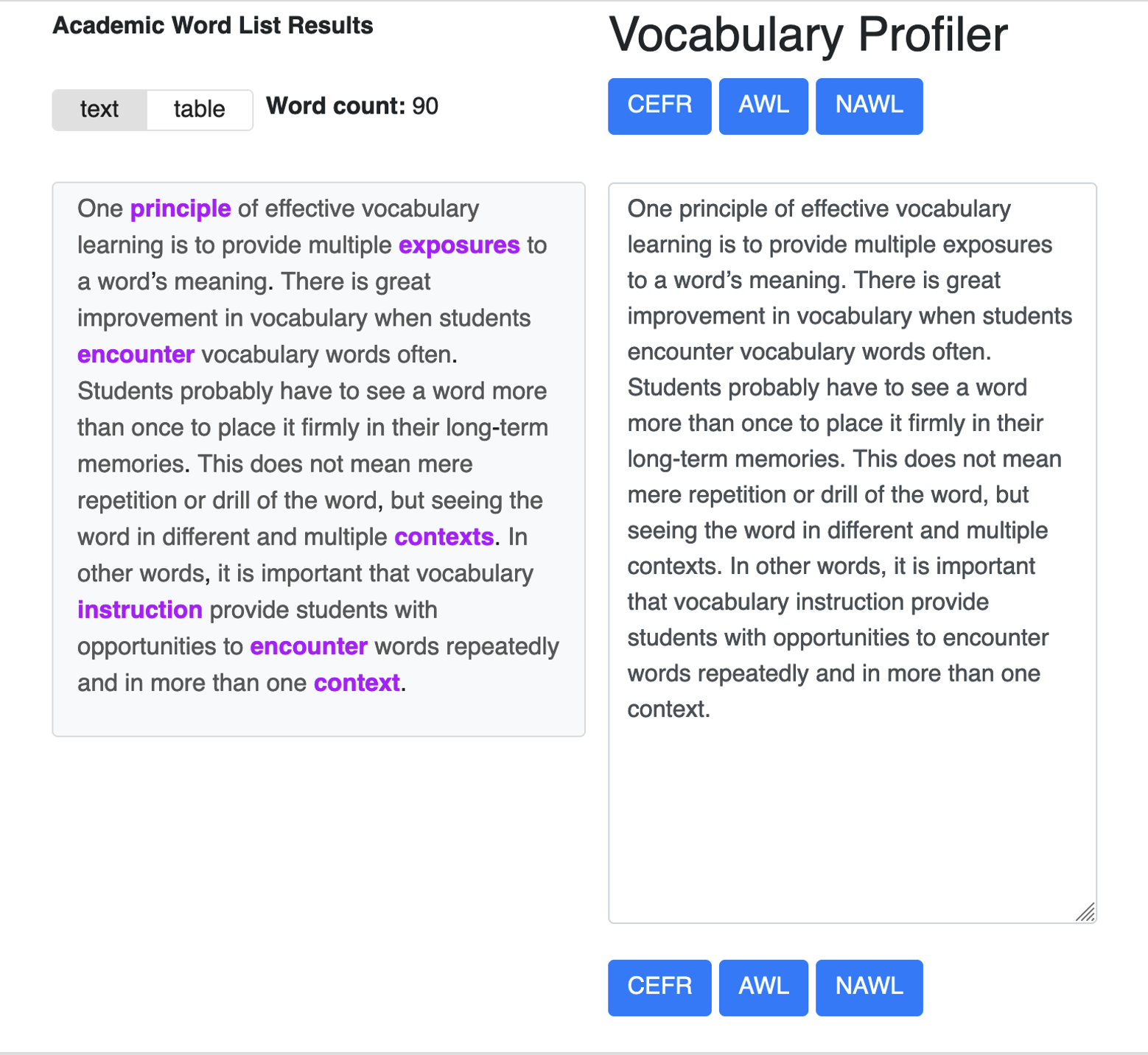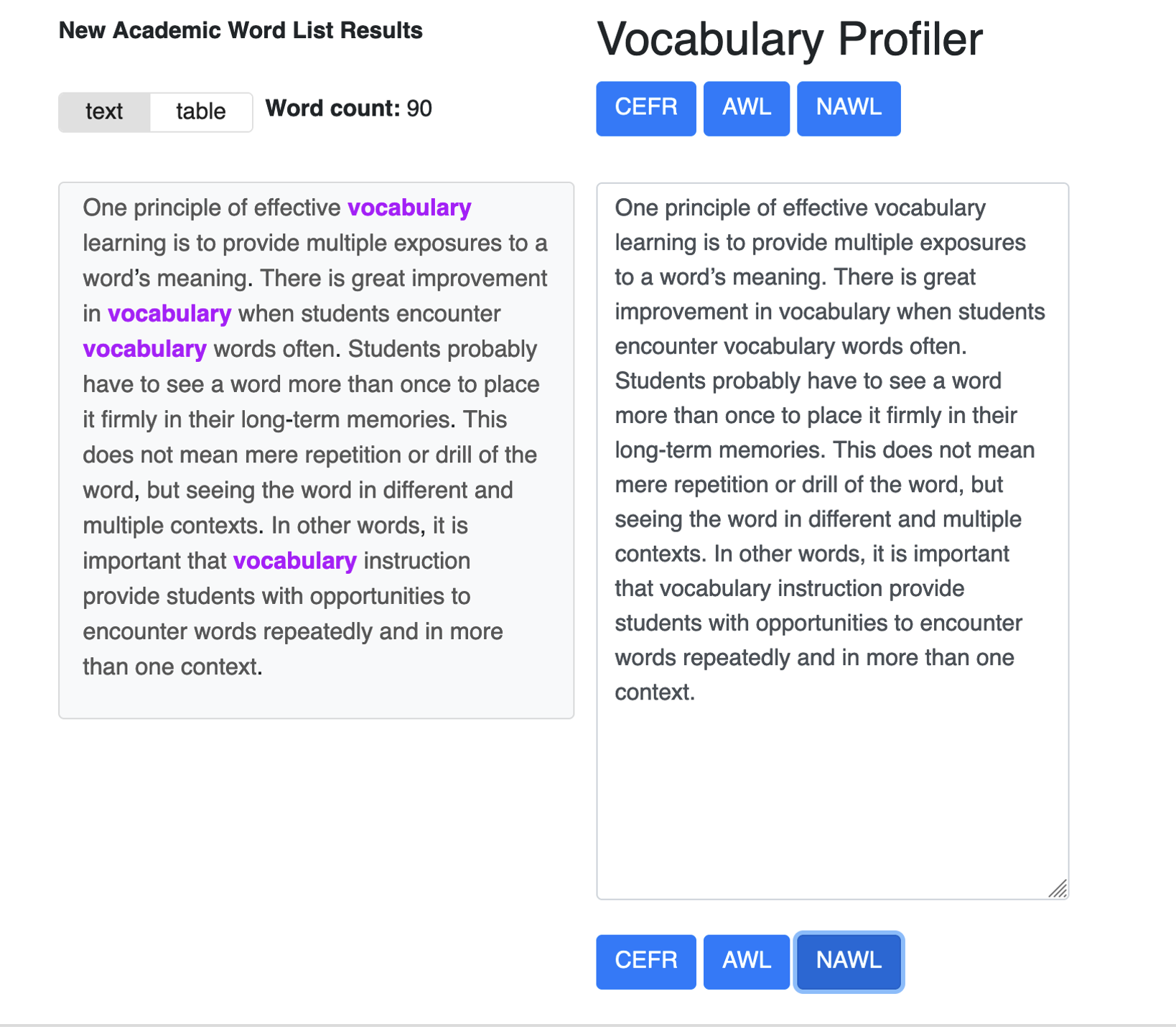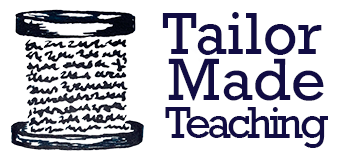Vocabulary Profiling 1
How do you decide on the vocabulary to teach students?
Which vocabulary in a given text would you want students to learn and which items could you just gloss?
If you use a course book, you probably don’t really think about this but if you’re adapting resources (either authentic materials or changing the level of ELT materials), these are important questions.
Usually, I think it’s a mixture of experience and guesswork. And, arguably, for general EFL classes that’s fine.
But, how do you choose the vocabulary you will focus on if you’re teaching courses in specialist subjects you don’t have as much experience in?
What if you want to prove to your students that those particular vocabulary items are useful?
What if you want students to be able to assess their own use of vocabulary in written work, in terms of level?
Vocabulary Profiling is the answer!
I’ve just discovered (through the CertPT in EAP) VocabKitchen and LexTutor. They’re really exciting and they’re free to use!
Using VocabKitchen you can check a text against CEFR levels, the Academic Word List (AWL) and the New Academic Word List (NWAL).
You can use it to choose which words to teach or change or to get students to profile their own writing. You might want to point out, if using the CEFR list, that the majority of words will be highlighted in blue (A1 level) if the text is grammatically correct. Also, students should note that this only indicates the level of discrete lexical items, idiomatic phrases or collocations which would be considered ‘advanced’ won’t necessarily be highlighted as advanced.
For help using LexTutor, have a look at Vocabulary Profiling 2
